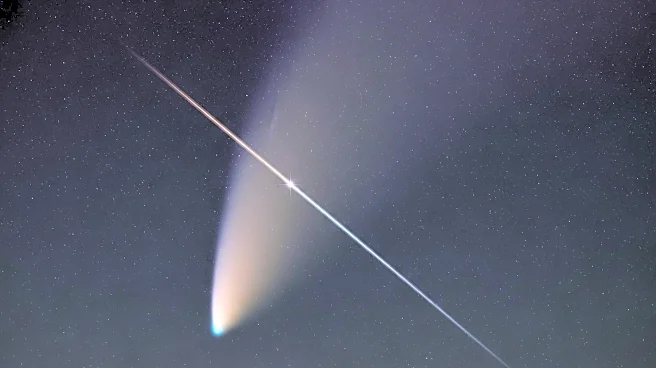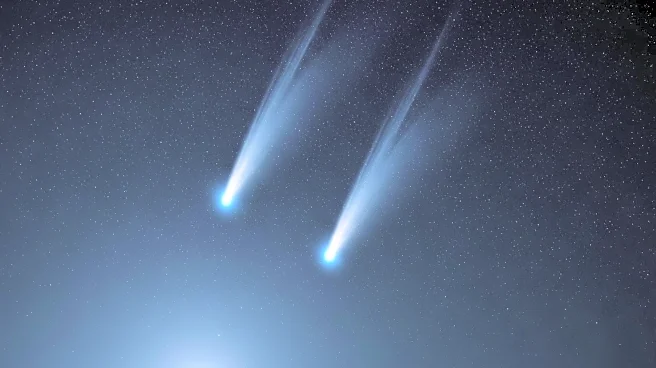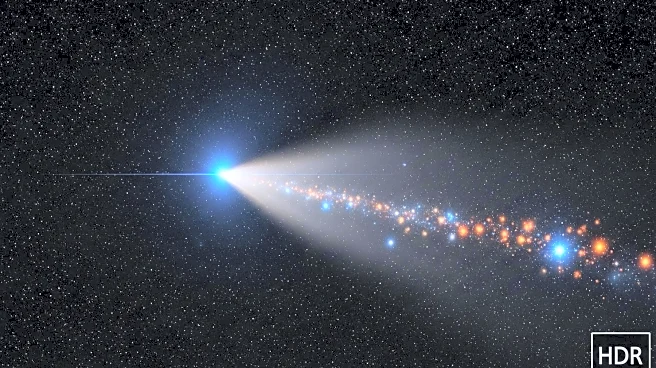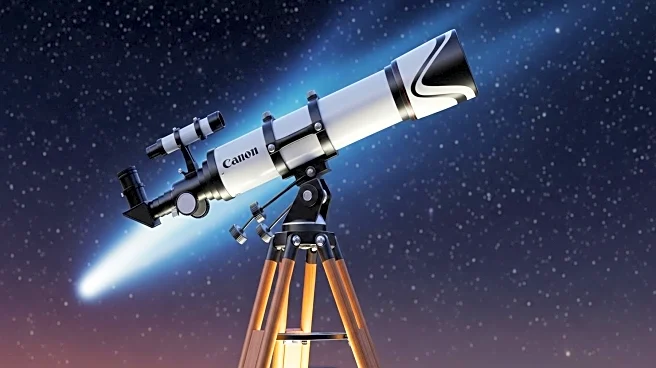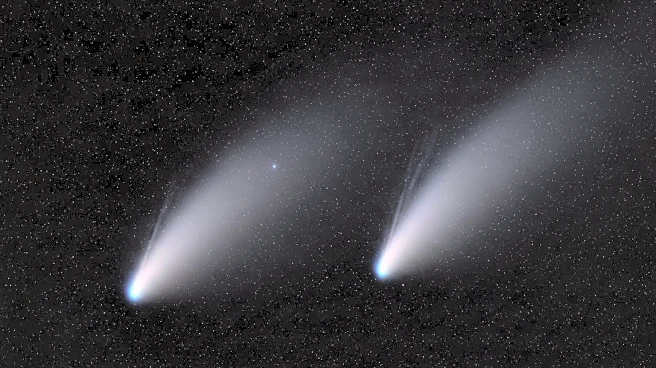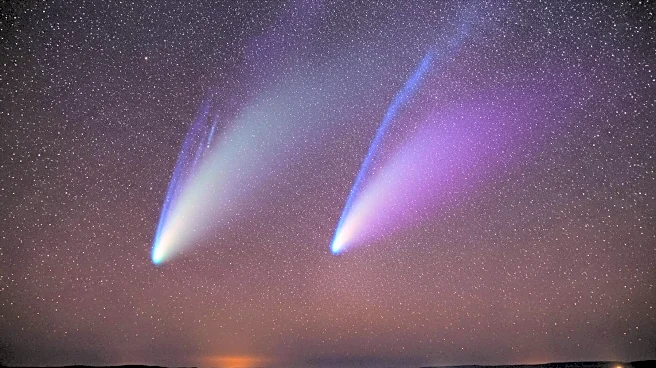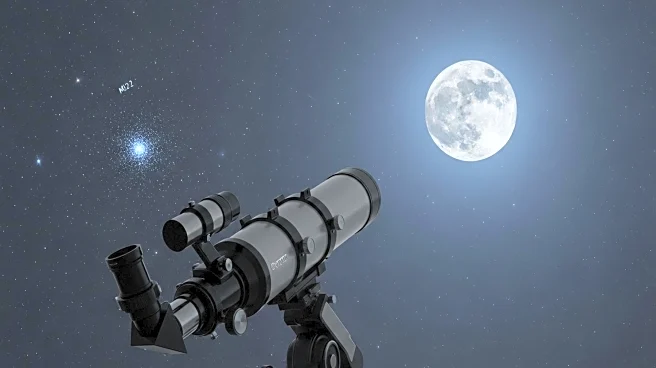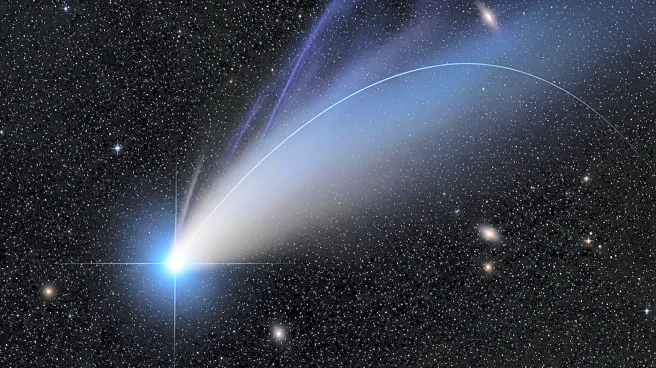What's Happening?
Comet Lemmon (C/2025 A6) is rapidly brightening as it approaches both the sun and Earth, evolving into a striking object visible through small telescopes and binoculars, and potentially to the naked eye. Discovered on January 3 by the Mount Lemmon Survey in Arizona, it is the brightest comet since Comet C/2024 G3 (ATLAS) last January. The comet will reach its closest point to the sun, known as perihelion, on November 8. Skywatchers are preparing for its best display in late October, with forecasts suggesting it could reach a brightness comparable to the star Megrez in the Big Dipper.
Why It's Important?
The potential visibility of Comet Lemmon to the naked eye presents a rare opportunity for the public to engage with astronomy. Such events can inspire interest in space science and encourage educational activities related to celestial phenomena. The comet's appearance could also lead to increased sales of telescopes and binoculars, benefiting the astronomy equipment industry. Additionally, the event may foster community gatherings and public skywatching events, promoting social interaction and shared experiences centered around science.
What's Next?
Comet Lemmon is expected to be most visible between October 22 and October 28, providing an optimal window for observation. Skywatchers are advised to seek dark-sky locations away from urban light pollution to maximize visibility. As the comet continues to brighten, it may attract more attention from amateur astronomers and photographers, leading to a surge in images and reports shared online. This could further stimulate interest in astronomy and potentially influence future educational programs and public outreach initiatives.

